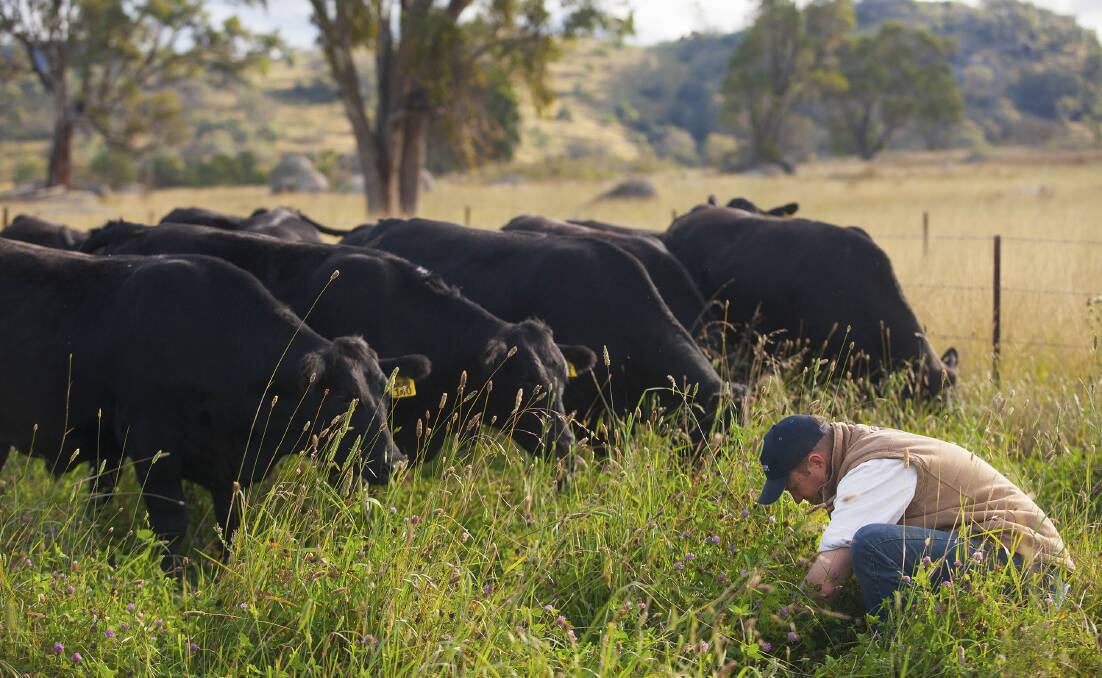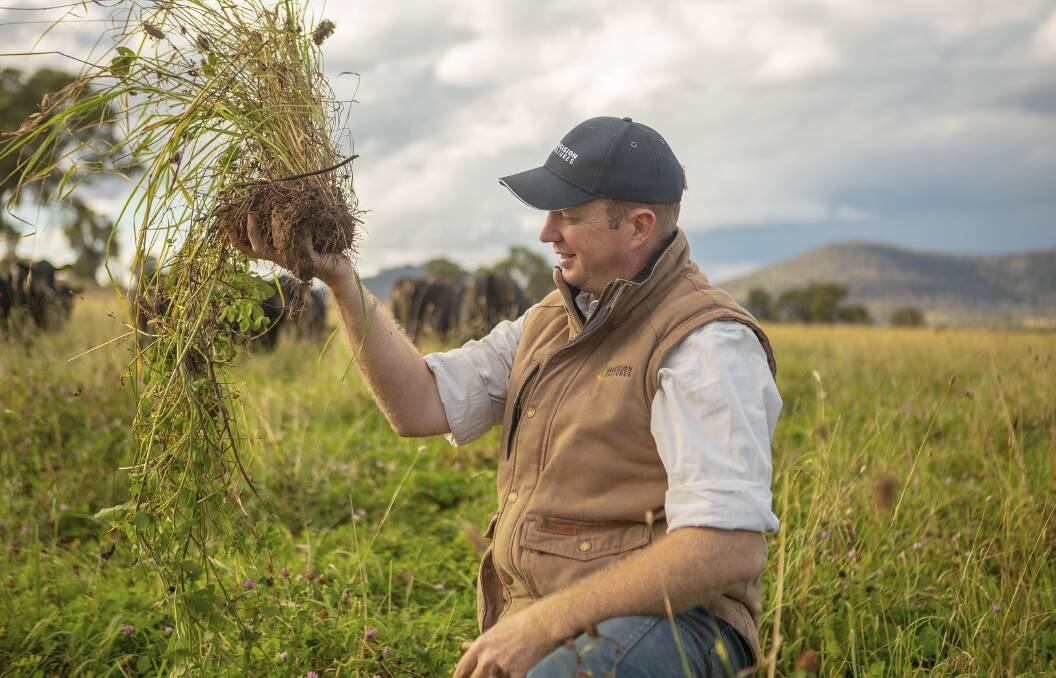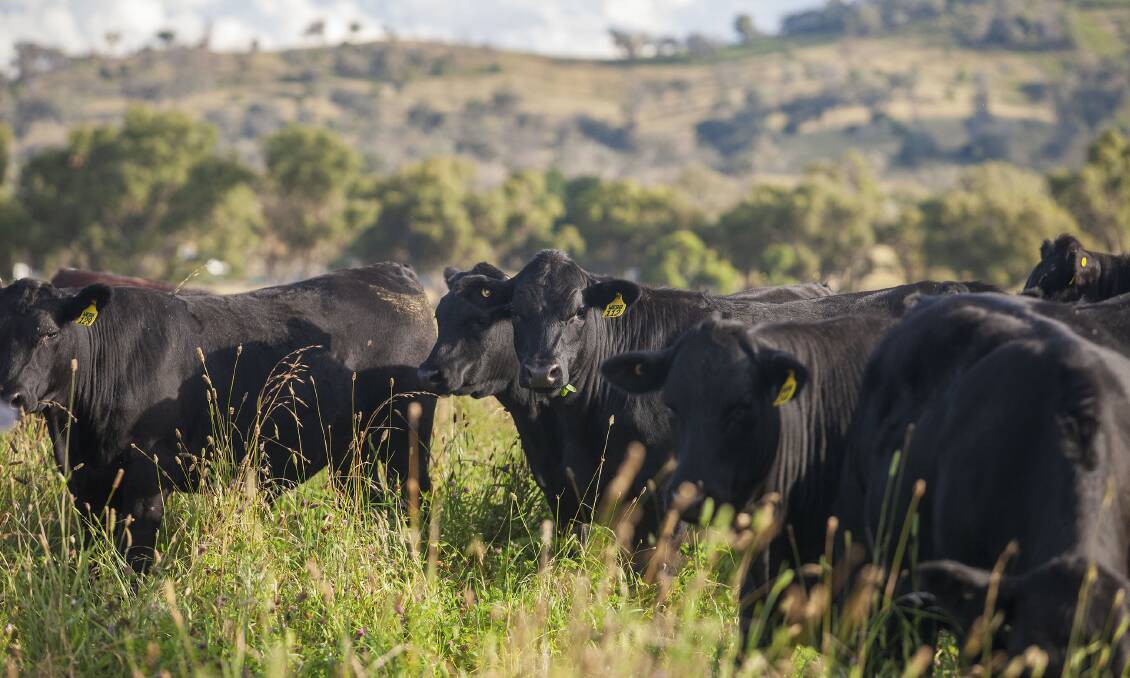
SOIL sequestration work, much of it on livestock properties, now accounts for close to a third of all carbon projects registered with the Clean Energy Regulator.
Subscribe now for unlimited access to all our agricultural news
across the nation
or signup to continue reading
And such is the demand for carbon credits from the corporate world that investors are checking the register daily for new projects and producers report receiving phone calls from potential buyers the week they register their project.
Still, many producers have questions around the how, what, why and when of soil carbon projects.
NSW sheep and cattle producer Hamish Webb, who also works with the soil, pasture and carbon services company Precision Pastures, outlined how his family has made carbon work for them at this month's Angus National Conference.
Hamish and Jess Webb run the 1200 hectare Myanbah at Uralla.
In a nutshell, for a cash investment of $263,000, over 30 years they have calculated they could generate around $5 million worth of carbon credits if they increase their soil carbon levels by 1 per cent..
In a preliminary pasture trial, they have increased carbon levels by .24 per cent - from 10cm down to 50cm. That has also meant a lift in carrying capacity of 70pc, in dry sheep equivalent per hectare per hundred millimetres of rain.
ALSO SEE:

Main driver
Increasing production was the reason the Webbs looked at a carbon project in the first place.
After purchasing Myanbah in 2019, soil tests revealed major acidity issues and deficiencies in sulphur, potassium and phosphorus.
They called in Precision Pastures who advised lime to solve the pH issue, fertiliser for the nutrient deficiencies and the addition of compost and some deep-rooted perennials and legumes.
"In passing, they said these activities are eligible to create carbon credit units," Mr Webb said.
So, despite knowing very little about soil carbon, he started to investigate.
In 2013, the Federal Government established the Clean Energy Regulator to generate methods for acquiring Australian Carbon Credit Units.
The most recent method established is the estimation of soil organic carbon sequestration using measurement and models, or what is referred to as the soil carbon method.
It's only a few years old but already has many projects to its name.

How it works
"The first thing to understand is you must undertake a new activity," Mr Webb said.
These are typically practices livestock producers are very familiar with: applying nutrients, lime to adjust pH, irrigating, rejuvenating pasture, establishing pasture where there was none, changing stocking density.
The project is registered with the CER, which assesses the preceding five years as the baseline period.
"Credits are not issued just for every tonne of carbon dioxide you sequester," Mr Webb said.
"You will need to consider what your farm emissions are and then in five years time, when the soils are retested, the first thing is to offset any increase in emissions.
"A carbon credit is a bit like a promissory note. Essentially it's a promise from me, certified by the CER, that I will keep each tonne of Co2 in the soil by maintaining the activity."
Key decisions
There are a few key decisions to make before costs and benefits can be calculated, Mr Webb said.
These include:
- Project registration: Will you do that yourself, appoint a project developer or join an aggregator's project? The Webbs started themselves then appointed a service provider to do audits.
- Project cost structure: Will you opt for higher upfront costs but a lower commission on ACCUs, vice versa or a one-off fee for service. The Webbs opted for the lowest percentage ACCU commission.
- Project proponent: Some service providers require taking ownership of the project. It's registered in their name and credits are issued in their name. That has significant tax and change of ownership risk implications to the producer. The Webbs wanted to retain ownership and maximum flexibility.
- Sale of credits: The options include forward contracts with the Emission Reduction Fund, or with a third party - sell them privately to a large emitter for example.
Mr Webb said investors were tracking down producers who listed new projects very quickly, offering a buy price.
"For us, we want to hold the credits on our balance sheet and sell at a time of our choosing," he said.
Costs and benefits
Starting with an average soil organic carbon level of 1.17pc (0-30cm) and bulk density of 1.35 cubic metres per tonne, the Webbs ran calculations on increasing SOC by 1pc.
For 25 years the total ACCUs would be 154,159.
At the current price of $35 each, the income per hectare would be $5188.
Over 1040 hectares, that would be $5,395,572 over the 25 year project.
If they did manage to lift SOC by 1.5pc, that total income would jump to $11,561,940.
On the cost front, the larger expenses include annual monitoring once a year at $2000, audits every five years at $9000, baselining at $8.20 per hectare to collect samples so $41,400 every five years and lab testing at $62,100 every five years. They will pay an ACCU commission of $431,645.
Total costs come to $694,845, with $263,200 paid in cash.
"The costs are not insignificant, however neither was the potential upside," Mr Webb said. "Ultimately, if I can increase my SOC by 0.05pc I'll cover my costs, and I've already achieved seven times that in three years on our pasture trial."


